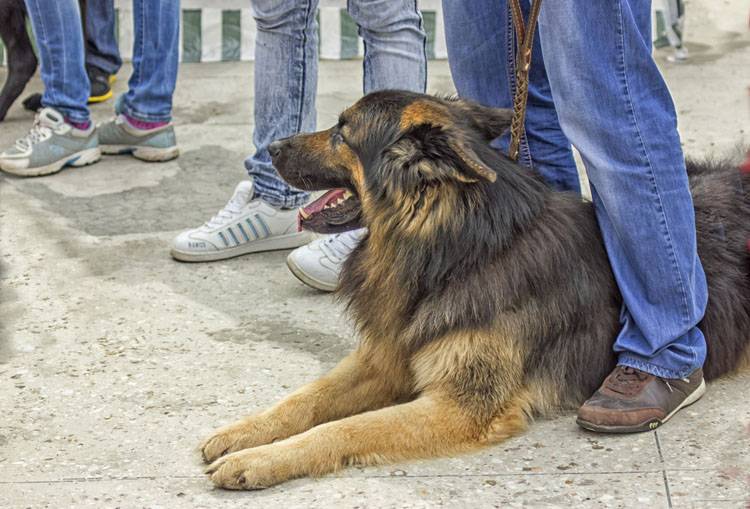How to Get the Most Out of Your Dog Training Class
Committing to weekly group dog obedience training sessions can be challenging, but it’s worth it. Make each class session count. It’s all about time management sprinkled with preparation and a dash of understanding your environment.
Arrive Early
Plan on arriving early, meaning you’re parking at the dog training center 10 minutes before class begins. This extra time cushion provides time for gathering treats, finding your clicker or giving your dog a quick potty break. Five minutes before class, find a corner spot inside and set all your stuff down so you are both ready for class to start.
If your dog is nervous about classes, arriving early provides extra adjustment time before other excited dogs begin filing in. For easily excited dogs, arriving early keeps your dog calm because you’re not rushing or piling in with the masses.
Bring Plenty of High Value Treats
Yes! The night before class, select and chop up high value treats into pea-sized portions. Plan on bringing 50-100 tiny treats per class session. It seems like too many treats, but usually it amounts to one cheese stick or hotdog if portioned correctly. If there are extra treats after class, let your dog race the treat bag on the drive home or freeze large amounts of leftovers for next week’s class.
Running out of treats during class will halt your progress. Either you stand still and watch others practice or you’re running into the retail area purchasing more treats. Either way, you’ve wasted at least five to 10 minutes. This usually happens during demonstration time (i.e. the dog trainer provides feedback while you practice), which is a crucial part of the learning process for you and your dog.
If you’re busy, try this time-saving tip: Place cut-up treats in a plastic bag and keep refrigerated. When running home to pick up your dog, grab the plastic bag and shove in your bait bag or purse. Keep an extra clicker in the car along with extra poop bags, as clickers always go missing it seems (maybe they’re hiding with all those missing socks). Voila, you’re all set!
Keep Your Distance
By arriving early, you can choose your spot before others arrive. Usually, corner spots work best for easily distracted or nervous dogs. Corner spots allow more wiggle room, so you’re able to control distance between other dogs and handlers. Distance is important, especially during the learning process, because it ensures your dog focuses on you until he learns polite behaviors. When in doubt, take a few steps back from other teams, and keep and maintain a three- to five-feet bubble from others.
Ask Questions If Confused
The worst thing you could do is leave class confused and frustrated. Usually, this happens during lecture time when the dog trainer is explaining how to teach your dog a new behavior. If you’re confused, raise your hand and say so politely. More than likely, you’re not the only one.
If you’re confused, the dog trainer didn’t explain correctly. Yes, it’s true. A dog trainer’s (teacher) job is to explain how to teach dog behaviors effectively so all dog owners (students) understand how to teach their dogs. Remember this when your dog (student) becomes confused because you (teacher) may need to explain it differently too. 🙂
As a dog trainer, I’m constantly interpreting your body language and checking in, so I can usually tell if you’re confused. There are moments when I’ve misread the group and everyone is doing their own things. That’s my fault. If I spot several confused expressions or someone staring into space, it’s my job as a dog trainer to stop and figure out how to explain it better. When new behaviors go seamlessly, I pat myself on the back.
Stay After With Questions
If you’re still confused, stay after class and ask more questions. Usually a third of the dog training class stays afterwards with questions pertaining to the session or behaviors at home, so be prepared to wait. Sometimes, a few seconds of one-on-one with a dog trainer answers your questions immediately.
If you’re pressed for time, plan to email your questions within 24 hours. Quickly emailing questions ensures you remember valuable details, which is important to understand the situation. Email is hard to interpret sometimes, but hopefully your dog trainer is able to send links to answer your questions and provide further research on specific topics.
Practice at Home
Practicing at home is very important! Ninety percent of behavior issues happen at home, so practicing within your environment is vital. Post homework sheets in a visible area, such as the refrigerator, and read thoroughly.
Set aside five minutes per day for practicing. Keep dog training sessions short (one to two minutes) and practice throughout the day. Another good thing about practicing at home is you can control distractions, which is not the case at the dog training center. 🙂
The secret to teaching foolproof behaviors is teaching and practicing at home, so you can polish them during group class!
Happy training!





